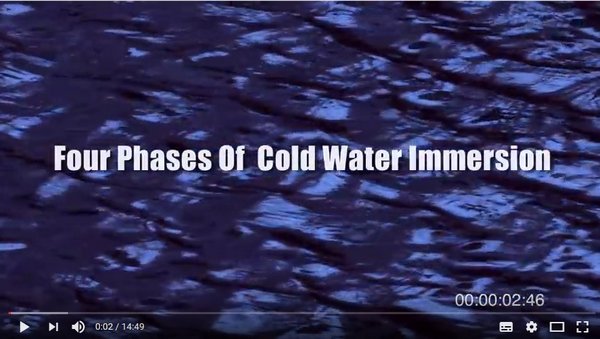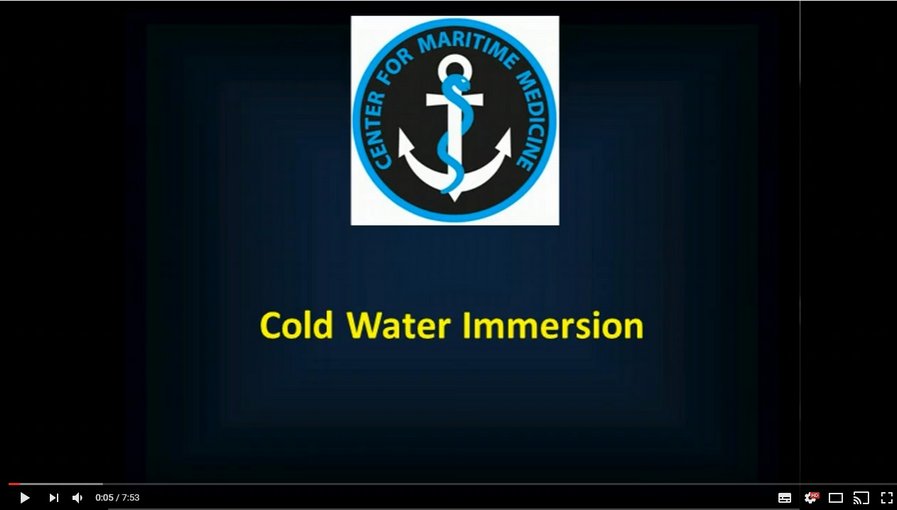Immersion in the always cold Northern European waters, 4 stages:
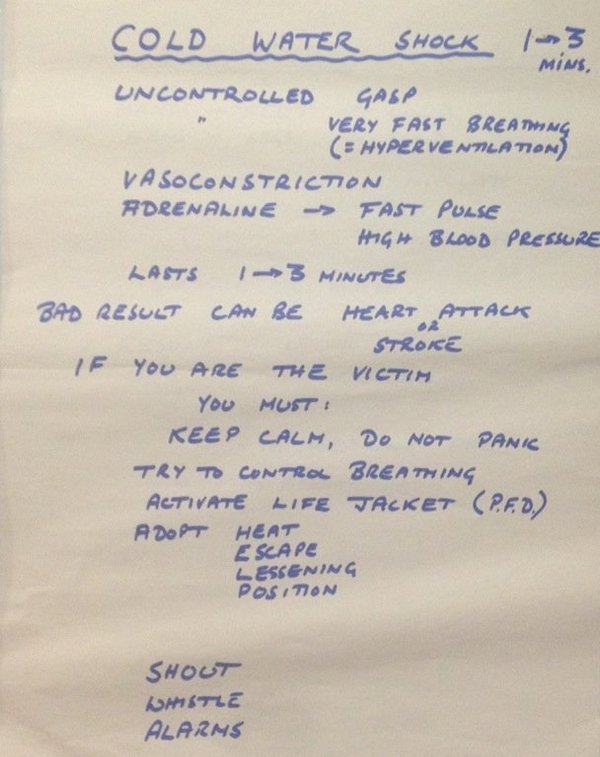
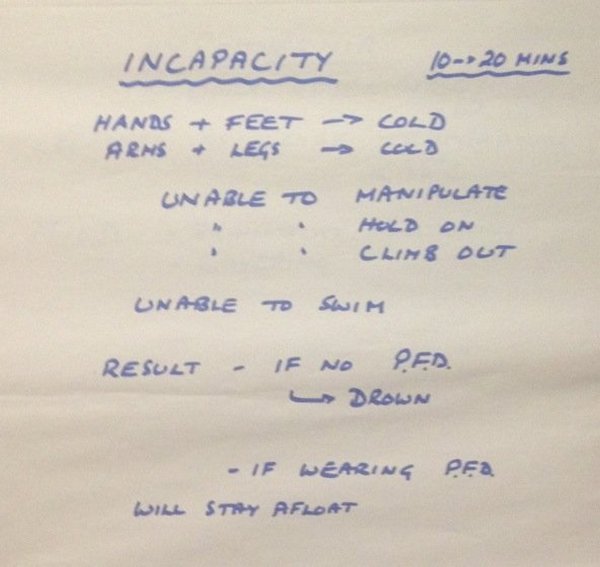
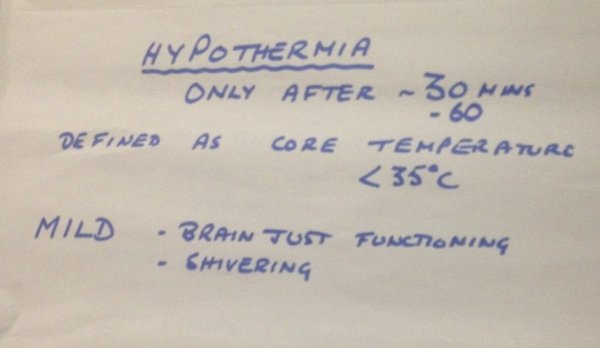
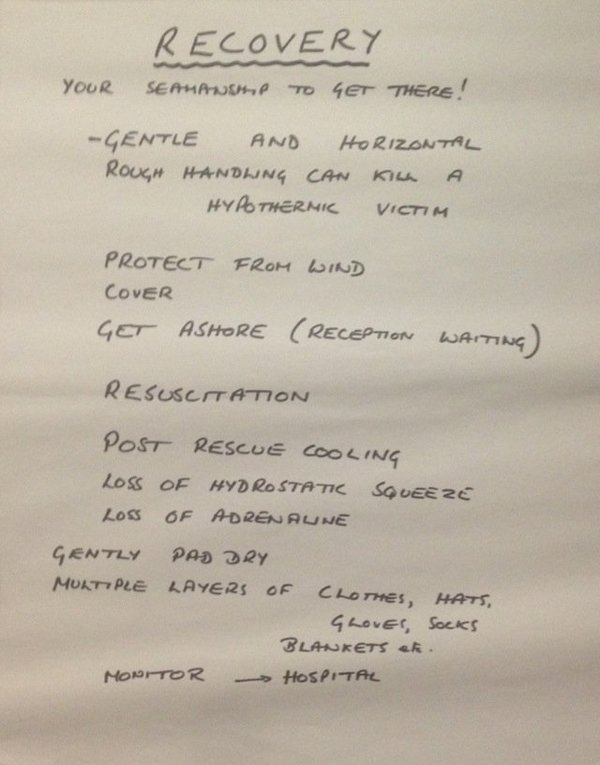
- Cold water shock (cws): Must gasp after 5 or 10 seconds, then very fast breathing. Inhalation of water can lead to closing of the airway, suffocation and death by drowning. Vasoconstriction of surface blood vessels and a surge of adrenaline leads to a very fast pulse and high blood pressure. This can lead to a stroke or heart attack and death- The cws lasts for 2 or 3 minutes.
- Cooling of the peripheries – feet, legs, hands and arms cooling leads to poor, weak, stiff, uncoordinated action. Therefore, unable to swim effectively, unable to hold onto a line, unable to climb a ladder or side of boat. After a time (variable) this cooling leads onto real core hypothermia.
- Hypothermia – where the core of the body is now cooling and is below 35 degrees centigrade. First the brain function deteriorates, then the heart and lungs weaken, chemistry goes all wrong. After some initial help by shivering, this stops. Body sinks eventually into unconsciousness – death can now be from inhaling water and drowning, or by the heart going into a useless rhythm eg Ventricular Fibrillation (VF) or stopping.
- Rescue: Mayday. Rough handling can kill a hypothermic victim. Especially be gentle on the neck, no unnecessary bending. Try to keep horizontal during recovery from the water, but speed is essential. If breathing, raise legs and put in recovery position. Protect from the wind, use orange survival bags. Cover cranium, hands etc. Monitor.
If resuscitation starts it must be continued non-stop.
Get ashore asap – helicopter, or rib + waiting ambulance.
Any rescued victim needs mental stimulation to keep fighting – especially talk about families and especially their children. Note there will be initial further post rescue cooling, and therefore possible slipping into unconsciousness. No alcohol. No drinks unless sure that there will be no further deterioration to unconsciousness. The loss of the hydrostatic squeeze and adrenaline drive contributes to deterioration and peri or post rescue collapse.
Check out these clips and explore other clips that appear.

